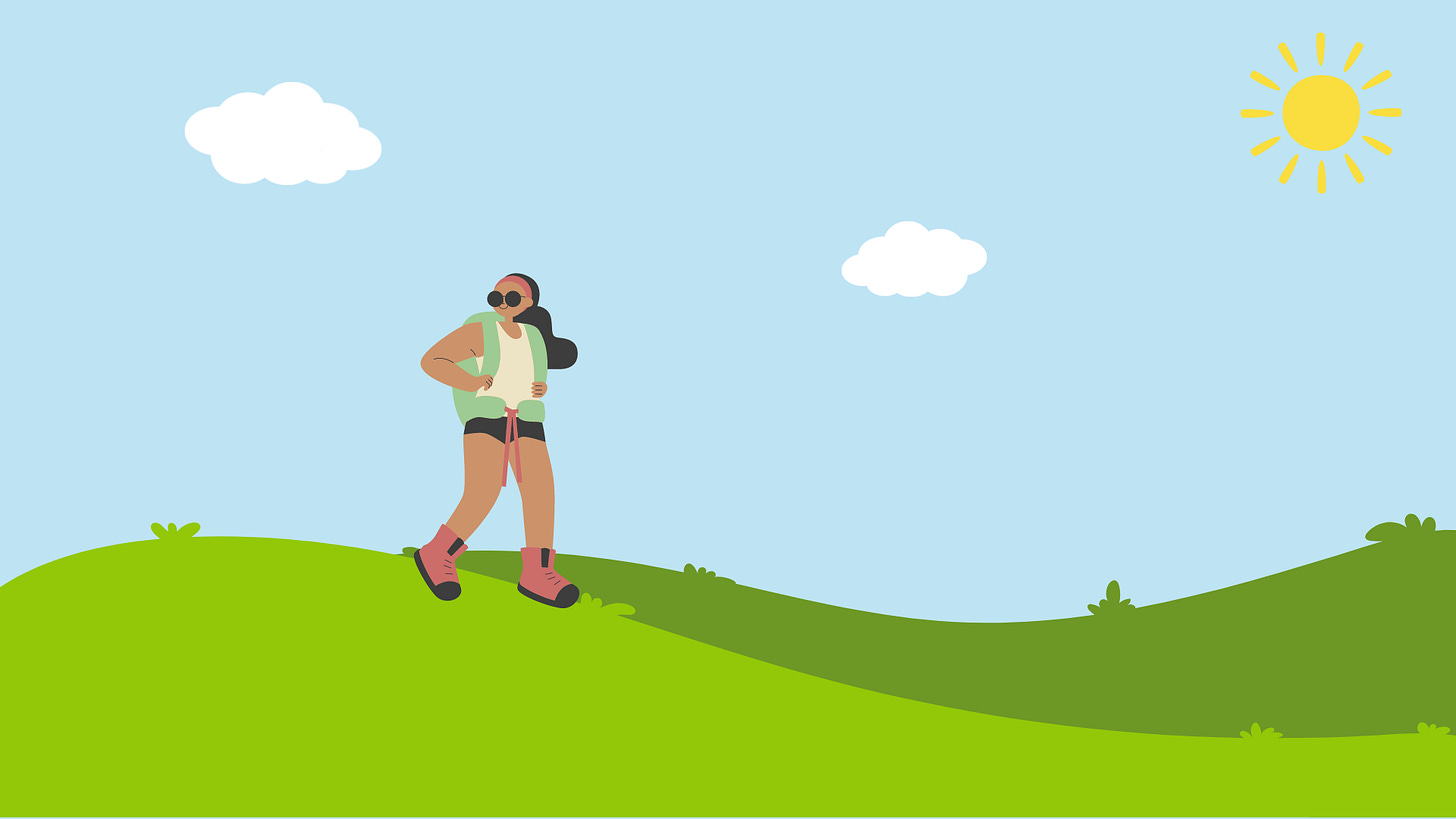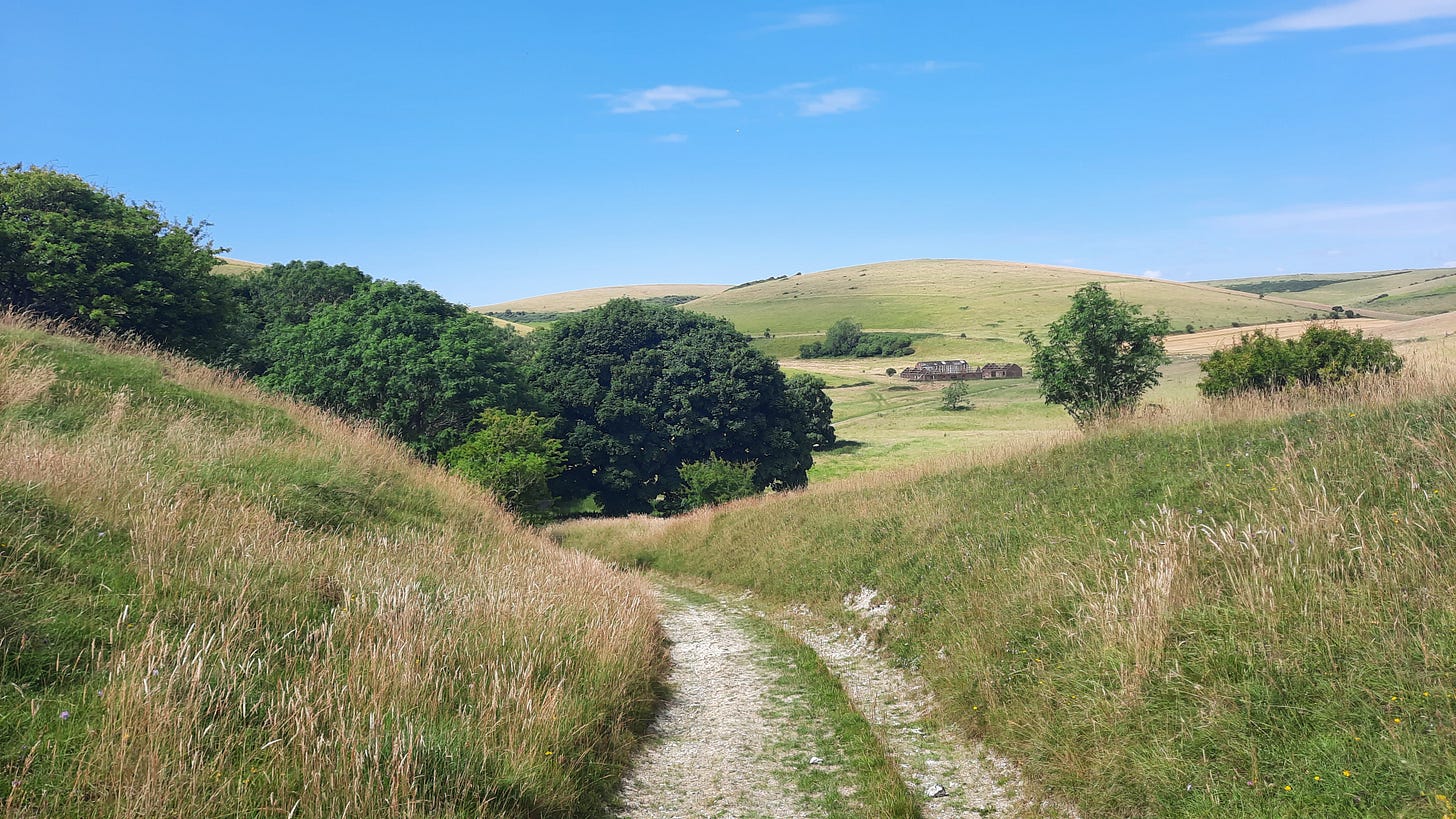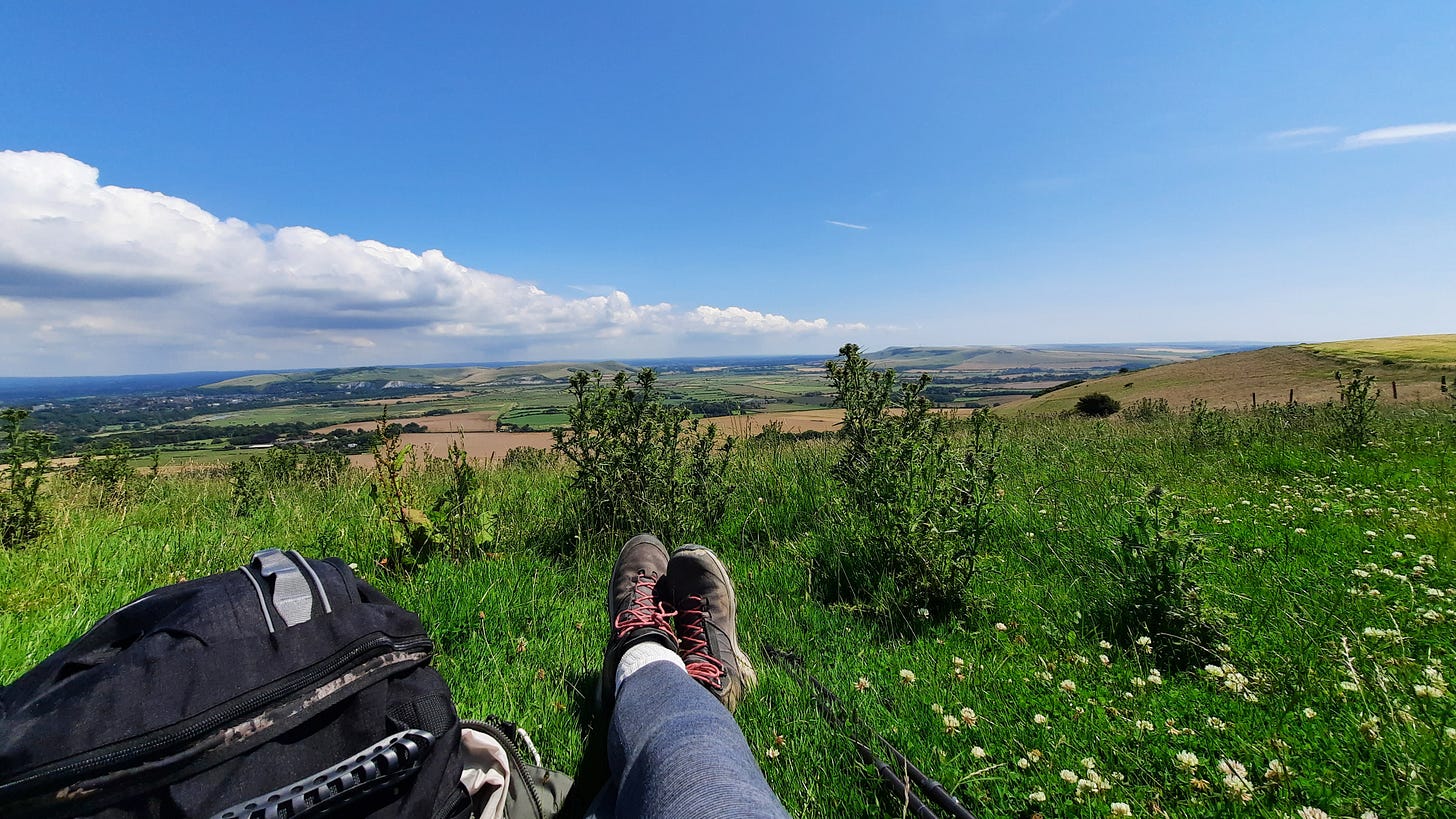I went for a long walk in the South Downs last week. It was the sort of walk I’ve been fantasising about for years: the kind where you put a few things in a backpack and set off along a path for several days, journeying between resting places with nothing but the scenery for company.
After many long months juggling full-time work with an untenable number of side projects and extra-curricular activities, I’ve been craving this kind of simplicity — the whittling away of choices and responsibilities until nothing remains but a few basic questions. Do I have food? Do I have water? Do I have protection against excesses of sun or rain? Do I know which way I’m going? When all these have been answered in the affirmative, there is nothing to do but put one foot in front of the other, over and over again, for hours — to bask in ‘the simple joy of feeling your body in the most primitively natural activity’, as Frédéric Gros puts it in A Philosophy of Walking.
Gros writes that when he walks, he is seeking ‘the gentle reassurance of a certain weariness’. There are different ways to be weary, he explains. There is the weariness that comes from lack of sleep, from overwork, from sustained, intensive effort. There is the weariness that comes from stress, from being in a continual state of nervous excitement, deluged with information and demands on our time. And there is the weariness that other people can produce in us, which comes of ‘seeing the same petty-minded attitudes reproduced everywhere’, and which we also produce in ourselves, tired ‘of our own predictable reactions, of the ruts we have fallen into’.
All these types of weariness are familiar to me. But the weariness that comes from a long day’s walking is the antidote to them all. It brings with it the deep satisfaction of having allowed your body the time and space to do nothing but the things it was built for, the things it evolved to do. It is, Gros writes, ‘a radiant weariness’. The rhythm of our step and our breath ‘gently wears away at the body as if it is being polished’, so that in the evening rest comes easily and serenely. Nothing truly productive has happened, but there is no question of needing to do more, or any suggestion that deep rest is anything but necessary, and earned. Perhaps, in the modern age, this is the source of the most profound feeling of post-walk ease — the sense of having transcended the productive vs. unproductive binary that shapes our lives the rest of the time.
But I also found, ironically, that it was this very transcendence that cleared the way for the best kind of productivity — the unsolicited, creative, inspired kind, the kind that feels like a gift rather than an obligation. It came as a surprise: I was walking for the sake of walking, not for the sake of my creative projects. But crossing the Downs without a laptop or even a notebook, I found my mind abuzz with ideas and stories. They weren’t fleeting or nebulous, but coalesced into something that grew like a snowball and remained clear in my mind until I reached my destination and could write them all down.
Walking and writing have long been activities that go hand in hand. Think of Virginia Woolf stepping out in London like Mrs Dalloway, Baudelaire flaneur-ing around Paris, Rimbaud wandering across France. As Robert Macfarlane observes in The Old Ways, ‘the compact between writing and walking is almost as old as literature — a walk is only a step away from a story, and every path tells.’ (The South Downs Way tells, among other things, of ancient chalk deposits, Saxon burial grounds, pagan hillside carvings, and ruined priories.)
In some ways the two seem like opposites, one physical and mobile, the other mental and sedentary. But both are journeys, explorations, unfolding in time, wending their way towards an end point without ever truly being completed. ‘As the pen rises from the page between words,’ Macfarlane writes, ‘so the walker’s feet rise and fall between paces … Writing and wayfaring are continuous activities, a running stitch, a persistence of the same seam or stream.’
The fundamental beauty of walking, I think, is that it makes space. We seek space outside of ourselves, and find it matched within. Over many hours, the heart pumps and the muscles heave and the sweat glands toil, and gradually the locus of experience moves out of the head and into the body. The mind is freed up; churned-up thoughts settle like sediment and make way for clarity and inspiration. ‘The mind [is] a landscape of a kind,’ says Macfarlane, ‘and walking a means of crossing it.’
I’ve long felt it to be the case, but my trip this week confirmed it: that together, writing and walking form a pair of wings. To be happy and fulfilled, I need to do lots and lots of both.
If you appreciated this post, please hit the heart below so that others can find it too!
And as ever… your regular reminder that if you like my writing you can support it by buying my book (UK edition / US edition) or sharing The Babbling Brook far and wide.








Love this - “… writing and walking form a pair of wings. To be happy and fulfilled, I need to do lots and lots of both.” Same here, have to do both regularly (every day, ideally).
This is gorgeous thank you! Radiate weariness is the perfect description of how I’m feeling after a glorious walk with my little dog today, made all the more special as a health condition means I have periods when I can’t walk. Yet, my body never forgets, and I can go on walks in my imagination with a similar sense of physical and neurological regulation that brings peace, and mental space.
Writing and walking are my wings - I love this! 🥰